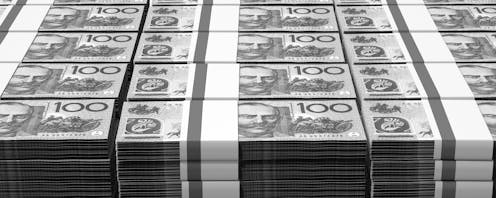What happened when we gave unemployed Australians early access to their super? We've just found out
- Written by Tristram Sainsbury, Research fellow, Tax and Transfer Policy Institute, Crawford School of Public Policy, Australian National University

One of the most well-established practical observations in economics is that when we give an unemployed person a payment, it tends to delay their return to work.
Rightly or wrongly, it is an argument used to justify a rate of JobSeeker one third below the pension.
How well does the finding apply if the payment is a A$10,000 lump sum delivered at the height of a pandemic, funded through a corresponding reduction in someone’s retirement savings?
That is what we and colleague Timothy Watson at the ANU Tax and Transfer Institute set out to examine as part of new research.
The early release of super
By way of recap, the COVID early access to superannuation announced on Sunday 22 March 2020 was available to people who faced a 20% decline in working hours (or turnover for sole traders), were made unemployed or redundant, or received JobSeeker or related benefit.
These people were able to take out lump sums of up to $10,000 between April and June 2020, and a further $10,000 between July and December 2020.
The maximum $10,000 represented approximately 13 weeks of (effectively doubled) unemployment benefit, and eight weeks of the minimum wage.
In essence, the government offered a bargain like this:
You know those superannuation savings you probably won’t be able to access until your late 60s? Well, life’s scary and uncertain. So here’s a chance to take out $10,000! You can only make use of it in the next three months though. That said, there’s a second chance in the next six months if you still qualify.
Three million Australians responded, close to one fifth of the population aged 16 to 65 with super accounts. Seven in ten took out the maximum $10,000.
This made the $38 billion withdrawn the second largest stimulus measure in 2020 behind the $88 billion JobKeeper wage subsidy, and one of the biggest stimulus measures in Australian history.





